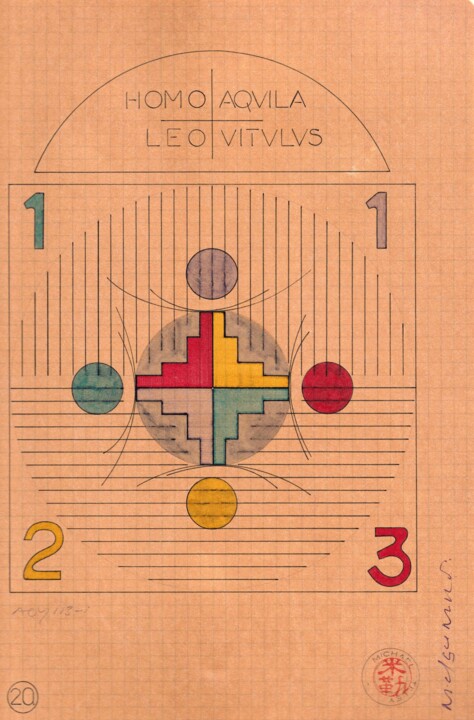


No.1: The crux dissimulata or the stupefaction of numbers (1977) Drawing by Wilf Tilley
Seller Wilf Tilley
-
Original Artwork (One Of A Kind)
Drawing,
Ink
/
Oil
on Paper
- Dimensions Height 11.8in, Width 7.9in
- Artwork's condition The artwork is in very good condition
- Framing This artwork is not framed
- Categories Conceptual Art Religion
Related themes
Karl MarxCrux DissimulataFibonacci SequenceSymbolismSemiotics
Wilf Tilley (Prof. Michael W. Miller) was born in the North of England and began his career as an actor, age 16, with the National Youth Theatre at The Old Vic in a production of Antony and Cleopatra in which Helen Mirren played Cleopatra and he carried a spear. “Wilf Tilley” (a combination of parental names) was part-adopted for a first solo exhibition at the AIR Gallery, London, when he was 27. Following an MA degree at the Royal College of Art, London, an interest in the neuro-anatomical drawings of Leonardo da Vinci led, via the Open University, to research on neuronal modelling in the Department of Physiology, Anatomy and Genetics in the University of Oxford. He was a Fellow of St. Catherine's College, Oxford, and after a two-year Fellowship in the International Center for Medical Research, Kobe, was a founder member, then senior adviser at the RIKEN Brain Science Institute, where he designed a brain science exploratorium (BrainBox). Wilf has held eight solo exhibitions, participated in group exhibitions internationally, and held a first retrospective in Japan (The Neuro-mytheologian And Other Works), in 2003. A novel (The Ladyboy Murders) was shortlisted for the Impress Prize for New Writers in 2015. In November/December 2017, he held a second retrospective at the Frederick Harris Gallery, Tokyo. And a recent portrait (Manami-san) is part of the New Light Art Prize Exhibition in the UK, touring five galleries nationally (2023-2024).
-
Nationality:
JAPAN

- Date of birth : unknown date
- Artistic domains:
- Groups: Contemporary Japanese Artists







